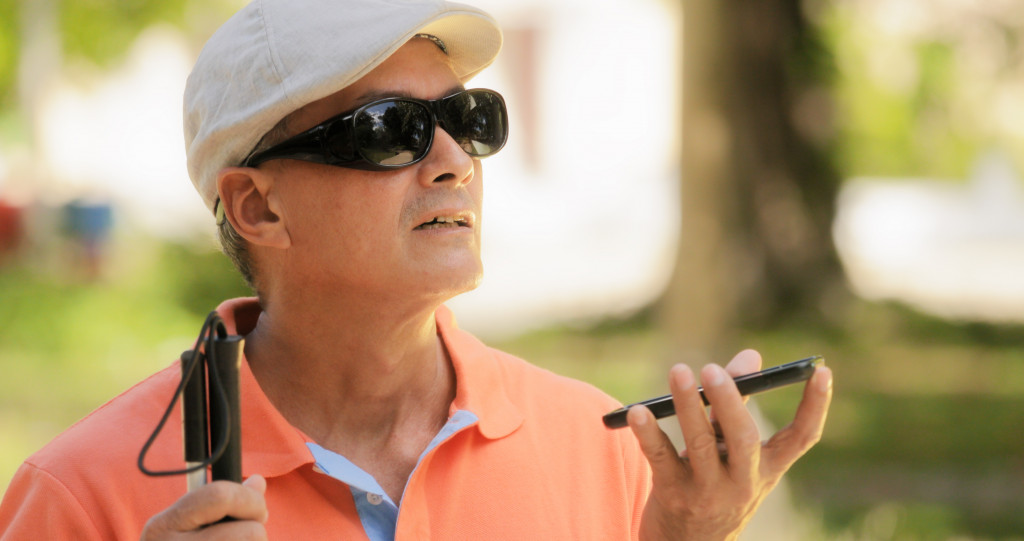- Technology improves mobility and independence for people with disabilities through power chairs, prosthetics, and mobility scooters.
- Assistive devices for vision and hearing, like screen readers, magnifiers, hearing aids, and cochlear implants, make communication more accessible.
- Speech-to-text software for hearing-impaired users is a game-changing technology that enables real-time communication like FaceTime or captioning videos.
- AAC devices and eye-tracking technology improve communication and interaction for individuals with speech and language disabilities or limited mobility.
- Assistive apps and software like spell-checking software and virtual keyboards increase accessibility for everyone at a minimal cost.
Technology has revolutionized the world and brought about significant positive changes in people’s lives and work. But it has also played an essential role in enhancing accessibility and independence for persons with disabilities. According to the World Health Organization, over one billion people have some form of disability, and technology has provided innovative solutions to help them overcome various challenges.
This article explores the various accessible innovations that are changing the lives of persons with disabilities. It will also discuss how technology has opened up new opportunities for people with disabilities, enabling them to live independent and fulfilling lives.
Wheelchairs and Power Chairs
Wheelchairs are the most common mobility devices used by people with physical disabilities. They provide a primary means of transportation and allow people to participate in different activities. With advancements in technology, power chairs offer more mobility options for people with disabilities.
Power chairs have a motorized system, allowing individuals to move around quickly, climb inclines, and travel long distances.
Prosthetics and Exoskeletons
Prosthetics have been utilized for centuries to help people with limb amputations. Modern prosthetics are significantly more advanced and provide more options than ever. They can give users greater independence and functionality with more movement control.
It shows how far technology has come and how it is changing the lives of people with disabilities. Exoskeletons, on the other hand, are like robotic suits designed to enhance mobility.
Mobility Scooters
Mobility scooters are also an excellent mobility solution for people with physical disabilities. They provide an alternative to wheelchairs and can be used for outdoor activities and longer distances. These scooters come in various sizes to accommodate individuals of different body sizes and require minimal effort.

Assistive Devices for Vision and Hearing
Screen Readers and Magnifiers
Screen readers and magnifiers are designed to help those with visual impairments explore digital content by converting text into speech or braille. Screen readers work by reading the content of a computer screen aloud, allowing visually impaired users to navigate through web pages or digital documents.
Magnifiers are used to enlarge text, images, or videos on screens, making them easier to perceive for low-vision users.
Hearing Aids and Cochlear Implants
Hearing aids and cochlear implants are assistive devices for people with hearing impairments. Hearing aids amplify sounds and enhance speech clarity, while cochlear implants work by sending electrical signals to the auditory nerve, bypassing the damaged part of the ear.
Modern hearing aids use wireless connectivity to pair with smartphones or tablets, allowing for easier control via mobile applications.
Speech-to-Text Software for Hearing-Impaired Users
One of the most remarkable technological innovations that have significantly changed the lives of persons with disabilities is speech-to-text software for hearing-impaired users. This game-changing software allows individuals with hearing impairments to communicate effortlessly with their friends, family, and colleagues.
The software listens to spoken language and converts it into written text, enabling users to read the conversation in real time. It can be used for in-person discussions, FaceTime or Skype calls, and even for captioning videos.
Assistive Devices for Communication and Interaction
Augmentative and Alternative Communication (AAC) Devices
People with speech and language disabilities use AAC devices to express themselves better. These devices come in various forms, such as tablets, mobile phones, and specialized communication devices.
AAC devices use different input methods, such as buttons or touch screens, to communicate with the user. They can produce synthesized speech or use pre-recorded messages to help users convey it.
Eye-Tracking Technology
Eye-tracking technology is a great assistive device for people with limited mobility or those who cannot communicate verbally. This technology uses cameras to track the user’s eye movements, enabling them to control a device by simply looking at it.
Eye-tracking technology can contain computer cursors, select items on a screen, and even communicate through specialized software.
Assistive Apps and Software
Assistive apps and software are designed to help people with disabilities perform various functions, such as reading or writing, more efficiently. Some apps read text aloud, spell-checking software, and even virtual keyboards for people with mobility impairments. These apps and software tools can be downloaded for free or at a minimal cost, increasing accessibility for everyone.

From wheelchairs and power chairs to assistive devices for vision, hearing, and communication, technology has opened up a world of possibilities for persons with disabilities. It is revolutionizing the lives of people living with disabilities by providing them with innovative solutions that give them greater independence and control over their own life.
Technology can also help improve accessibility in many different areas, from transportation to education, making it easier for individuals with disabilities to participate in activities they may have been excluded from before. The advancements made through accessible innovations are remarkable and show how far humans have come regarding the inclusion and acceptance of all abilities.
